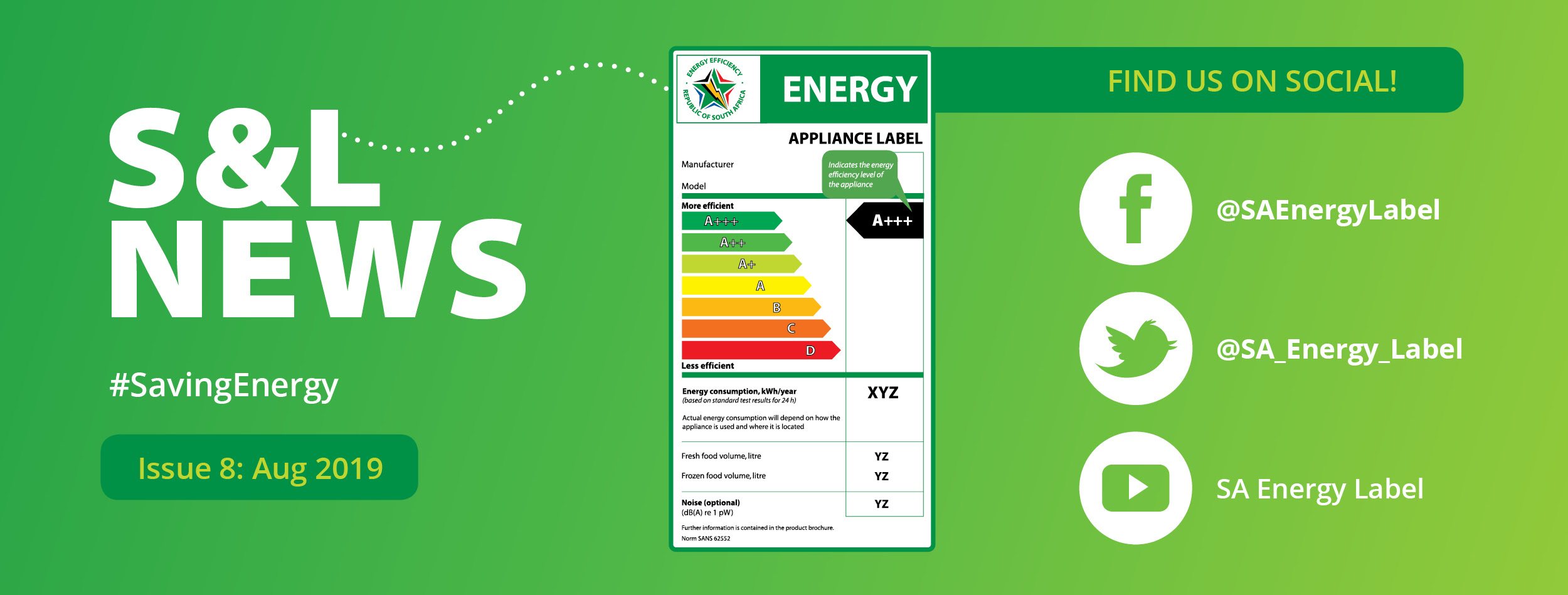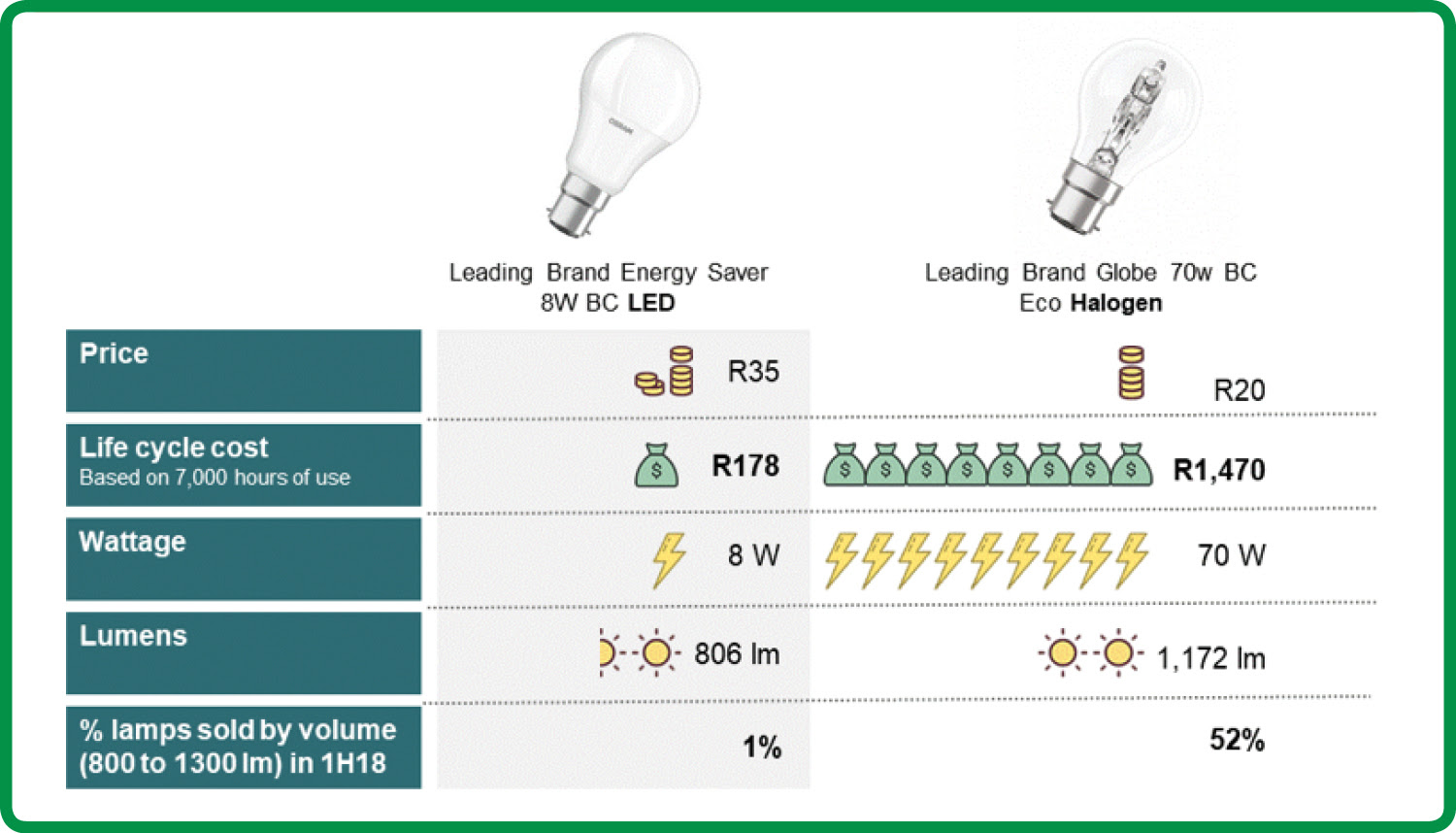Newsletter Issue 8 August 2019


Project Manager’s Message
Welcome to the 8th edition of the S&L News. Full focus on illumination!
The phrase “keeping the lights on” is synonymous with adequate electricity supply. Consequently, in this edition of the S&L News we focus on the project’s latest household energy efficiency initiative – illumination – the Residential Efficient Lighting Programme.
- Lighting remains the most universal use of electricity across all LSMs, making it a critical aspect of ongoing household electricity efficiency.
- Past experience has already proven the extensive savings potential of energy-efficient lighting.
- Inefficient lamps continue to pose a real risk to sustained electricity demand reduction, particularly in peak periods.
- We are shifting to the next generation of best available technology, from Compact Fluorescent Lamps (CFL) to Light-Emitting Diode (LED). LEDs are a rapidly-developing technology which are more efficient and do not contain mercury.
To maximise proven benefits and negate probable risks, the process of developing technology-neutral technical specifications for general service lamps (GSL) is well underway, in close cooperation with national government, the regulator, industry stakeholders, international colleagues and other participants. Simultaneously, the program is funding the safe and responsible crushing of confiscated lamps.
We have also taken immediate action in addressing the urgent need for greater consumer awareness and understanding in the form of a multiplatform information and education campaign. This campaign targets buying behaviour directly – including at point of purchase.
Theo Covary
S&L Project Manager
Older Technologies Continue to be More Popular than LED
CFL dominance was more or less embedded when Eskom freely distributed over 70 million CFL to households as part of reducing peak period demand and preventing ‘blackouts’ between 2007 and 2015. This mass rollout facilitated rapid market penetration and soon made CFLs the country’s de facto symbol of energy efficiency. South Africans all benefitted from the resulting energy savings in their homes and the reduced demand on the national power network.
Now that Eskom’s programme has ended many consumers are having to repurchase lamps but are making poor choices. Research undertaken by the S&L project found that the top two lamps during the first half of 2018 – accounting for 65% of sales in the 800 to 1 300 lumen category, one of the most popular amongst households – were halogen lamps, which are very inefficient. The financial benefits of shifting from halogen to LED are demonstrated below.

Watts, Lumens & Informed Buying Decisions
The research undertaken also found that consumers:
- Are not able to distinguish between W-defined globe strength and lumen capacity (the real decider of light radiance in new technology), or how to compare like for like between old and new.
- To be strongly driven by price in buying replacement lamps; particularly since free CFL distribution to disadvantaged households ceased.
Turning Information into Communication
Knowing that South Africans understand efficient lighting, but lacked the information to make informed buying decisions, a simultaneous two-pronged approach was adopted:
- Short, punchy, eye-catching and informative consumer education videos were made and widely distributed online via social media. Well received and broadly shared, they make for fast, essential viewing for all lighting consumers.
- An easy-to-understand point-of-sale lighting information label was designed. It underwent several incarnations based on consumer research feedback, and the final product will be placed on retail shelves to:
Responsibly Out with the Old
Part of rapidly replacing outdated lighting technology is its safe and responsible disposal. The S&L project is funding the destruction of over 1.2 million illegal lamps seized by the regulator.


Development of Regulations
A stakeholder consultation workshop on the proposed draft regulation was held on 25 July with the aim of introducing technology-neutral technical specifications for GSL. The proposed regulations will be submitted to the Minister soon for ratification and can be viewed here. A technology-neutral approach was selected, as it makes the regulations non-discriminatory to specific technologies, and it avoids the need to develop additional regulations if / when new lamp technology enters the market.
We’ll keep you updated as developments they unfold; so look out for more on lighting and other S&L project initiatives in upcoming editions.
If you haven’t already subscribed to the newsletter, subscribe now!

“About half of a city’s energy bill is lighting. Seeing the opportunities with LEDs where they can reduce their energy bill by half – or even up to 70% – Quite often means they can spend the money elsewhere or they can reduce public budget deficits.”
– Harry Verhaar,
Head of Global Public & Government Affairs
Philips Lighting


